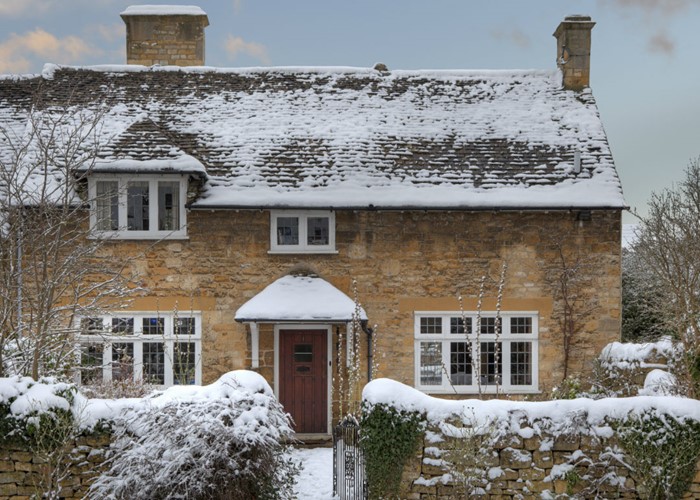How Big Was The Housing Boom?

Which parts of the UK were the biggest winners and losers in the house-price explosion? We dig up the data and find out.
Last month, I looked at over twenty years of house price data from the Halifax House Price Index (HPI) to find out just how bad the Nineties housing crash was. I revealed my findings in How Bad Was The Last Housing Crash? These articles showed that prices dropped by an average of an eighth (-12.5%) across the UK as a whole. However, there were far steeper plunges in previous hotspots, such as East Anglia (-33.9%), the South East (-30.7%), the South West (-29.3%) and Greater London (-27.9%). Anyway, that's the gloom, now let's look at the boom! Across the UK overall, house prices turned the corner in the second half of 1995 and have been rising ever since. Then again, different regions bottomed out at different times, and price rises have varied across the nation. So, let's begin by looking at the UK at the top level and then move on to analyse each of its twelve regions in A-Z order: The UK house-price boom, from bottom to top Based on the Halifax House Price Index, here's the UK's twelve-year surge: High/LowHouse price (£) Q3 1995 61,115 Q3 2007 198,664 Increase (£) 137,549 Increase (%) 225 Annual increase (%) 10.3 Thanks to the ongoing crunch in world credit markets, house prices in the final quarter of last year were 1% lower than the previous quarter.* Thus, the peak for the UK as a whole came in the third quarter of 2007. From 1995 to 2007, house prices rose by a compound 10.3% a year, and more than tripled over this period. Like many others, I predict that prices are set to soften for some time yet, so we may not regain the Q3 2007 peak for some time. Now let's take a tour of the UK's dozen regions: East Anglia House PricesHigh/LowHouse price Q1 1993 £57,200 Q3 2007 £193,574 Increase (£) £136,374 Increase (%) 238% Annual increase (%) 8.8% The recovery began much earlier in East Anglia and ran for a total of 14½ years. Over this period, prices rose by an average of 8.8% a year, underperforming the UK as a whole. Having dived hard during the slide, the fens rose more slowly in the upswing. East Midlands House PricesHigh/LowHouse price (£) Q3 1995 £52,618 Q3 2007 £167,314 Increase (£) £114,696 Increase (%) 218% Annual increase (%) 10.1% Although the East Midlands fared worse in the crash, it recovered at a similar rate to the rest of the UK, with house prices rising by more than 10% a year for twelve years. Greater London House PricesHigh/LowHouse price (£) Q1 1993 £75,832 Q3 2007 £320,364 Increase (£) £244,532 Increase (%) 322% Annual increase (%) 10.4% London crashed harder than the rest of the UK last time around, but turned the corner quicker. It then set off on a 14½-year climb, with prices rising slightly quicker than the UK average of 10.3% a year. But in 2007, according to Halifax, the pace of annual price rises slowed to just 4.5% overall and the average price fell of a London home actually fell by over £20,000 (over 6%) in the last quarter. So much for well-off London being immune to a housing downturn! Northern Ireland House Prices As I explained in my previous article, Northern Ireland has never suffered a housing downturn since 1984 -- yet, that is! Even so, here's how NI prices have performed since the UK market hit rock bottom in Q3 1995: High/LowHouse price (£) Q3 1995 £44,624 Q2 2007 £228,200 Increase (£) £183,576 Increase (%) 411% Annual increase (%) 14.9% As you can see, property prices in the Six Counties have skyrocketed since late 1995, more than quadrupling thanks to a gravity-defying rise of 15% a year. Then again, Northern Ireland peaked halfway through last year. Since then, the average price has dropped by almost £12,000, or 5%. Given that wages are much lower in NI than on the mainland, I expect property prices to continue to dive as Northern Ireland crashes harder and faster than the rest of the UK. Fasten your seatbelts for a rough landing, folks! North West House PricesHigh/LowHouse price (£) Q4 1995 £52,158 Q4 2007 £153,979 Increase (£) £101,821 Increase (%) 195% Annual increase (%) 9.4% The North West has bounced back more slowly than the rest of the UK: at 9.4% a year, the annual rate of growth is almost a full percentage point less than the 10.3% recorded nationally. However, property prices did almost triple in twelve years and, significantly, prices in this region were still rising at the end of 2007. Still, falls may occur in early 2008. Northern House PricesHigh/LowHouse price (£) Q3 1995 £48,750 Q2 2007 £155,158 Increase (£) £106,408 Increase (%) 218% Annual increase (%) 10.4% Again, house-price trends in the North broadly followed that of the UK as a whole, with prices rising by 10.4% a year over 11½ years. Note that prices have come off the boil since the summer, falling by 2.4% since halfway through 2007. That's house prices in the six regions of the UK dealt with. In Part Two of this article, I review the remaining regions: the South East, South West, Scotland, Wales, the West Midlands, and Yorkshire & Humberside. More: Get a marvellous mortgage via the Fool | Buying A Home In 2008 | House Prices And The Double-Edged Sword *According to latest Halifax house price dataMost Recent
Comments
Be the first to comment
Do you want to comment on this article? You need to be signed in for this feature








